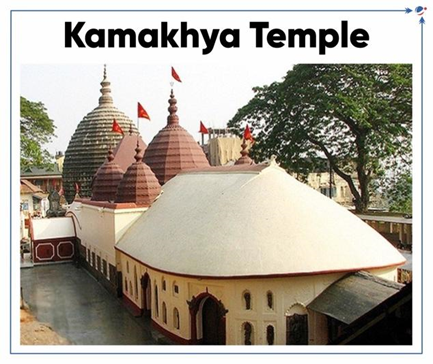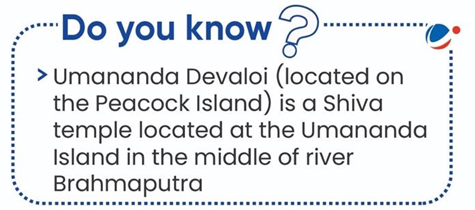Why in the News?
Recently, Prime Minister laid the foundation stone for the Maa Kamakhya Access Corridor in Assam.
About Maa Kamakhya Access Corridor
- It aims to boost the tourism in the region by improving the ease of access and comfort for the devotees.
- It is designed on similar lines of Kashi (U.P) and Mahakal (M.P) corridors.
- The project was sanctioned under the Prime Minister’s Development Initiative for North Eastern Region (PM-DevINE) scheme.
- PM-DevINE is a Central Sector Scheme, launched during Union Budget 2022-23.
- Objectives:
- Fund infrastructure projects.
- Social development in North East Region.
- Livelihood activities for youth and women; and
- Fill the development gaps.
- Ministry: Ministry of Development of North East Region.

About Maa Kamakhya Temple
- One of the Maha Shakti Peeths in India.
- Dedicated to Maa Kamakhaya/Kameswari (referred as Goddess of desire).
- Geographical location: Located on the Nilachal Hills overlooking river Brahmaputra on the outskirts of Guwahati (Assam)
- History
- Reconstructed in 1562 at the behest of Naranarayan (King of Koch dynasty) as the former temple was destroyed by Kala Pahar.
- Finds mention in the inscription of the Allahabad pillar of Samudragupta.
- Dedicated to different forms of Mother Shakti, namely Sundari, Tripura, Tara, Bhuvaneshvari, Bagalamukhi and Chinnamasta
- Architecture
- Nilachal Style of architecture is used in the reconstruction of the temple.
- It is a combination of two different styles namely, the nagara style (North Indian) and Saracenic style (Mughal).
- The dome made of bricks is a sixteen-sided polygon decorated with horizontal bands.
- The temple complex consists of three major chambers.
- The western chamber is rectangular, while the middle chamber is square, and the third chamber is formed of a cave.
- While the middle chamber comprises of inscriptions and images of Naranarayana (Koch King) the third chamber comprises of a yoni-like cleft in the bedrock of a cave along with a natural spring.
- Festivals
- A week-long fertility festival called Ambubachi Mela is held every June in the temple complex.
- During the period i.e., the seventh to the tenth day of the Hindu month of "Asadha", the shrine is closed as it is believed that Goddess goes through the annual cycle of menstruation.
- Traditional belief is that the goddess worshipped as mother earth, enters her annual menstrual cycle during the period.
- All agricultural work like digging, ploughing, sowing, and transplanting of crops are forbidden during the festival.
- A week-long fertility festival called Ambubachi Mela is held every June in the temple complex.
- Centre of Tantrism: It is referred as a prime centre for tantric Shaktism in the country.
- Tantrism refers to the branch of knowledge that protects and liberates its practitioners.
- Tantrism, however, is divided into three major streams.
- Agama: The one that comes directly from the lips of Lord Shiva.
- Nigama: the one that comes from Shakti
- Yamala: one that comes neither from Lord Shiva nor Shakti

Shakti PeethsShakti Peeths are places of worship dedicated to Sati or Shakti. There are total of 51 Shakti Peeths including India, Nepal, Bangladesh, Pakistan, China and Sri lanka of which 18 are referred as Maha Shakti Peeths Some other Shakti peeths outside India are
 |
About Tantrism
|
Other famous temples in Nilanchal hills
- The complex is surrounded by many other temples like Bhubaneswari, Kali, Tara, Chhinnamasta, Bagala, Bhairavi, Doomavati, Matangi and Kamala
- All these temples along with Kamakhya are collectively known as the Dasa-mahavidya.
- Five temples of Lord Shiva namely Kameswara, Siddheswara, Kedareswara, Amratokeswara, Aghora and Kautilinga are present along the nilancal hills.
- All these temples together form the Kamakhya temple complex.



